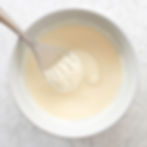
What Foods to Avoid Cooking in Cast Iron and Why It Matters
0
1
0
When you think of cooking with cast iron cookware, you might picture dishes seasoned to perfection with rich flavors. While cast iron is celebrated for its durability and superb heat retention, not all foods fare well in these pans. Learning which foods to steer clear of can help you avoid kitchen mishaps and elevate your culinary skills. This guide will clarify these concerns, enriching your cooking experience while keeping your cast iron in tip-top shape.
Benefits of Cooking with Cast Iron
Cast iron cookware has been a kitchen essential for decades, thanks to its performance and versatility. Here are some key advantages you should know:
Durability
Cast iron cookware is built to last. With proper care, it can easily survive for decades, often being passed down as a family heirloom. Unlike non-stick pans that wear out and lose coating, cast iron develops its own natural non-stick surface when seasoned correctly. Studies show that well-maintained cast iron can last upwards of 100 years.
Versatility
Cast iron isn’t just for frying. Whether you’re sautéing vegetables, baking cornbread, or roasting meats, cast iron can be your best friend in the kitchen. For example, you can start a dish on the stove and transfer it right to the oven. This flexibility makes cast iron a preferred choice for many.
Nutritional Benefits
Cooking in cast iron can slightly boost the iron content of your food. Research suggests that cooking acidic foods in cast iron can increase their iron levels by about 20%. This can be particularly beneficial for those who need more iron in their diets.
Flavor Enhancement
Many chefs believe that cast iron enhances the overall flavor of dishes. The natural seasoning adds a depth that can improve the taste of meats and vegetables. For example, steaks cooked in a cast iron skillet often have a delicious crust that intensifies their flavor.
Eco-Friendly Choice
Since cast iron is made from natural materials, it does not release harmful chemicals into your food during cooking. This makes it a healthier alternative compared to synthetic non-stick surfaces.
Potential Risks of Cooking in Cast Iron
Though cast iron cookware offers numerous benefits, some foods can pose challenges or risks when cooked in it. Here’s a closer look at potential concerns:
Reactive Foods
Foods with high acidity, like tomatoes and vinegar-based sauces, can react with cast iron. The result can be a strange metallic taste and discoloration of the dish.
Weight Consideration
Cast iron pieces are heavier than most cookware. If you struggle with lifting, transferring large pots or pans can be cumbersome and may increase the risk of accidents in the kitchen.
Maintenance Needs
Cast iron requires regular care and attention. If you neglect to season it properly, you might find it rusting or losing its non-stick qualities. Regular seasoning can take an extra few minutes every couple of months but is essential for longevity.
Foods to Avoid Cooking in Cast Iron
Now that you know the benefits and risks of cast iron, it is important to recognize specific foods that may not perform well. Below are some items to avoid:
1. Highly Acidic Foods

Examples: Tomatoes, vinegar, citrus fruits.
Why: These ingredients can corrode the seasoning, resulting in a metallic taste and discoloration of your meal. Continuous cooking with acidic foods can wear down the protective coating, requiring more frequent reseasoning.
2. Delicate Fish

Examples: Flounder, sole, or any flaky fish.
Why: Delicate fish can struggle in cast iron due to its heat retention. This can lead to overcooked or stuck fish. Opt for a non-stick option or a well-seasoned enameled pan for better results.
3. Eggs

While you can technically cook eggs in cast iron, they are better suited for a well-seasoned or enameled skillet.
Why: Fresh eggs may stick to inadequate seasoning, creating a frustrating cooking experience and messy cleanup. If scrambled eggs are your go-to, a non-stick pan may yield better results.
4. Dairy-Laden Foods

Examples: Cream sauces, custards, or casseroles.
Why: Like eggs, dairy can stick to poorly seasoned cast iron, leading to uneven cooking and cleanup woes. Consider using a stainless steel or non-stick pan instead for creamy dishes.
5. Sweet Foods

Examples: Cakes, cookies, and low-temperature desserts.
Why: Sweet recipes often require even heating. The high heat retention of cast iron can cause burning or uneven baking. For best results, use bakeware designed for desserts.
6. Certain Vegetables

Examples: Spinach, beets, or any moisture-rich vegetables.
Why: These vegetables may absorb iron from the skillet, affecting flavor and color. They can also release moisture that interferes with cooking.
7. High Sugar Foods

Examples: Caramels, glazes, or any high-sugar dishes.
Why: Sugar can burn easily and stick to the pan, resulting in ruined dishes and tedious cleaning. You’re better off using glass or non-stick cookware for sugary treats.
Summing Up
Understanding how to cook with cast iron is vital for every enthusiast. While its durability and flavor potential make it an exceptional choice for many recipes, knowing what not to cook can save you time and frustration.
By steering clear of highly acidic foods, delicate fish, and sugary dishes, you can ensure your cast iron remains in excellent condition. Embrace the benefits of cast iron by using it wisely, and enjoy the delightful results it brings to your culinary adventures.
Happy cooking!










